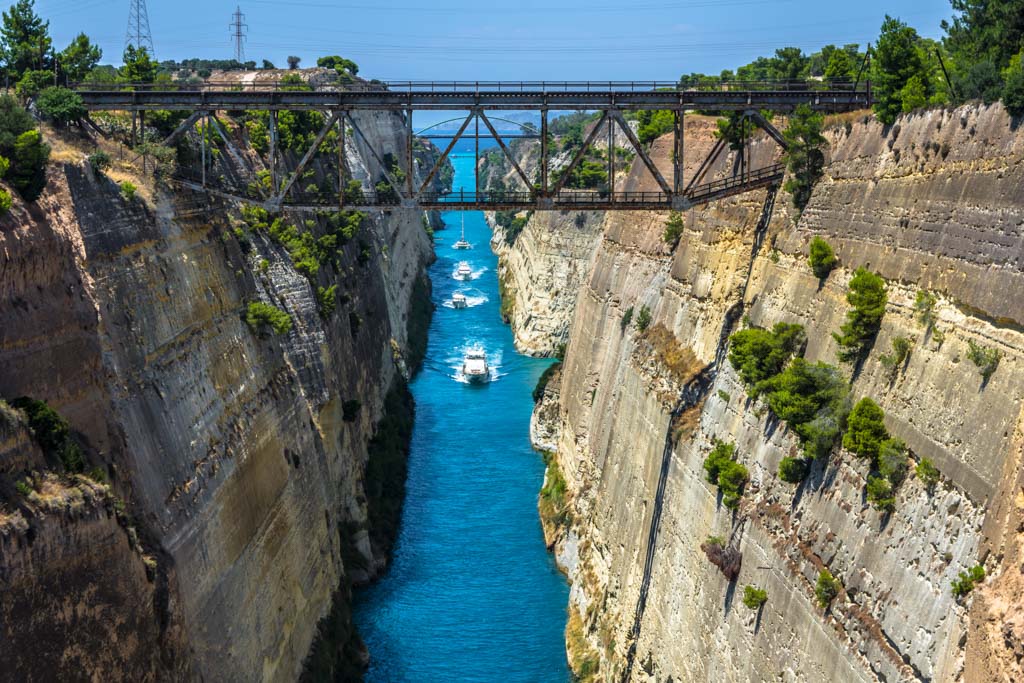Visitors driving from Athens down to the Peloponnese begin their journey with a popular landmark – the Corinth Canal. It’s worth stopping to take a look – with its straight sides of approximately 100 meters in height and its narrow width of just 25 meters, this famous canal is a dramatic and photogenic sight.
With the land distance separating the Saronic Gulf from the Gulf of Corinth being just over six kilometers, it is no wonder that it was long the dream to cut a canal through this narrow strip of land between the Peloponnese and the mainland in order to save ships the long navigation around the peninsula.
The Diolkos
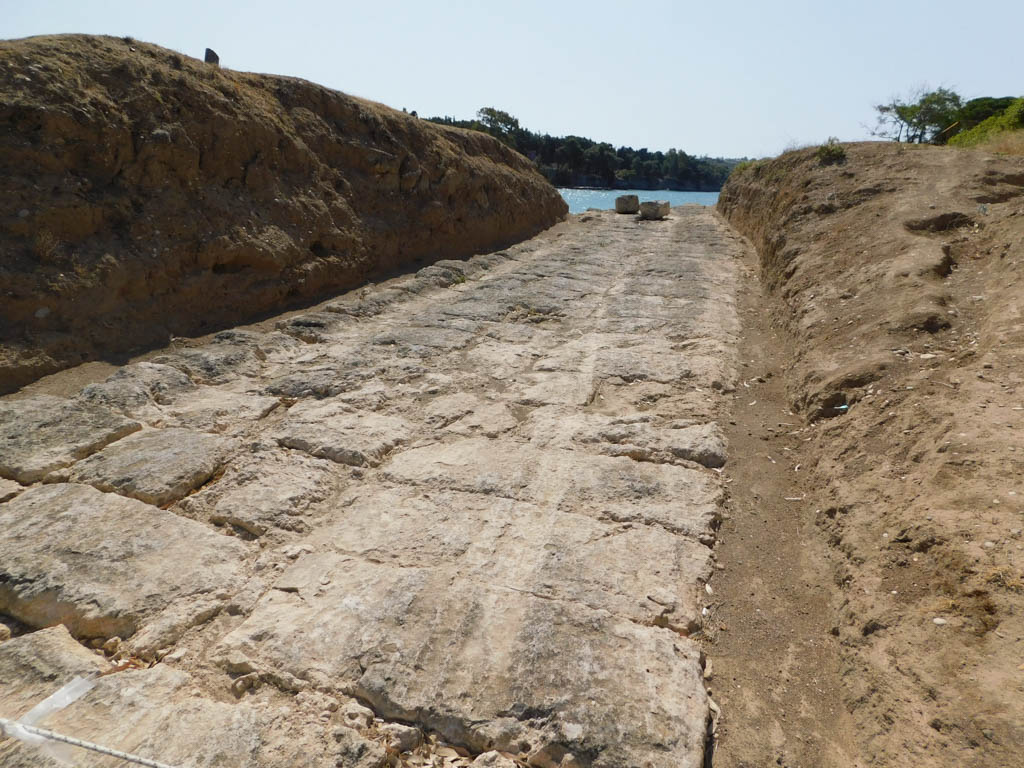
The first attempt to take advantage of the proximity of the two gulfs was over 26 centuries ago. The tyrant Periander proposed the project at the end of the 7th century BC. Due to various reasons- the technical challenge, the expense, and perhaps not least the potential danger of jeopardizing Corinth’s dominance in trade by making it too easy to simply sail past, he scrapped the project. Instead, he built the diolkos- a paved trackway for boats to be moved overland from one gulf to the other. Traces of the original diolkos remain.
A Dark Prophecy
Plans for the canal met with another setback centuries later, with the prophecy of Apollonius of Tyana foretelling that anyone attempting to dig such a canal would be struck with illness. In truth, it was actually worse, with three Roman emperors planning the project but meeting violent deaths. Julius Caesar had proposed it but was later assassinated, as did Caligula later before meeting the same end. Emperor Nero got so far as to break ground – personally taking a pick-ax to the ground in 67 AD. An enormous workforce of 6000 Judaean prisoners of war set to work, and according to reports they managed to proceed some 700 meters. Nero died by suicide the following year, and the project again was abandoned, this time with no traces still visible today.
Herodes Atticus, whose name is well known to us from the magnificent theater at the base of the Acropolis, among other things, considered another attempt. But nothing came of it. Over a millennium passed with no further attempts, until the Venetians considered it in the 17th century after their conquest of the Peloponnese. But again nothing came of it.
A Modern Nation and a Modern Dream
Upon the founding of the Modern Greek State after the 1821 War of Independence, freeing Greece from the Ottoman Rule, the first head of state of modern Greece, Ioannis Kapodistrias, again revisited the dream of millennia. He consulted French engineers. But the estimated cost for the project (40 million gold Francs) was simply too much for the new nation to consider taking on the ambitious project.
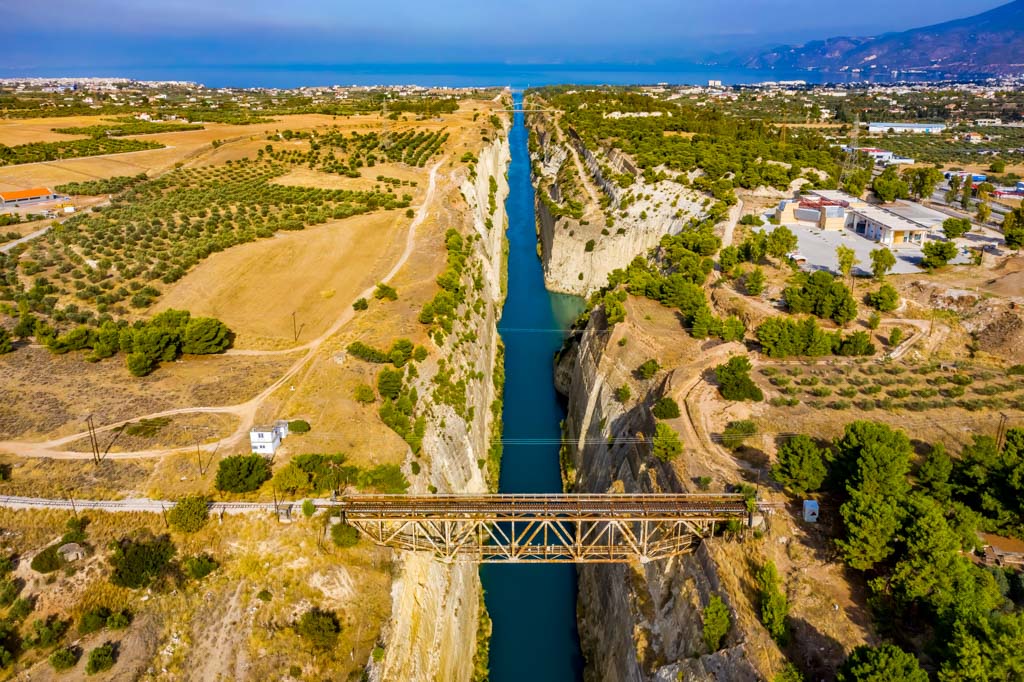
When the Suez Canal opened in 1869, the dream was again revisited. Prime Minister Thrasyvoulos Zaimis put a plan into effect, but after the attempt to construct the Panama Canal went bankrupt, the French banks funding the Corinth project also withdrew, and the project was once again abandoned.
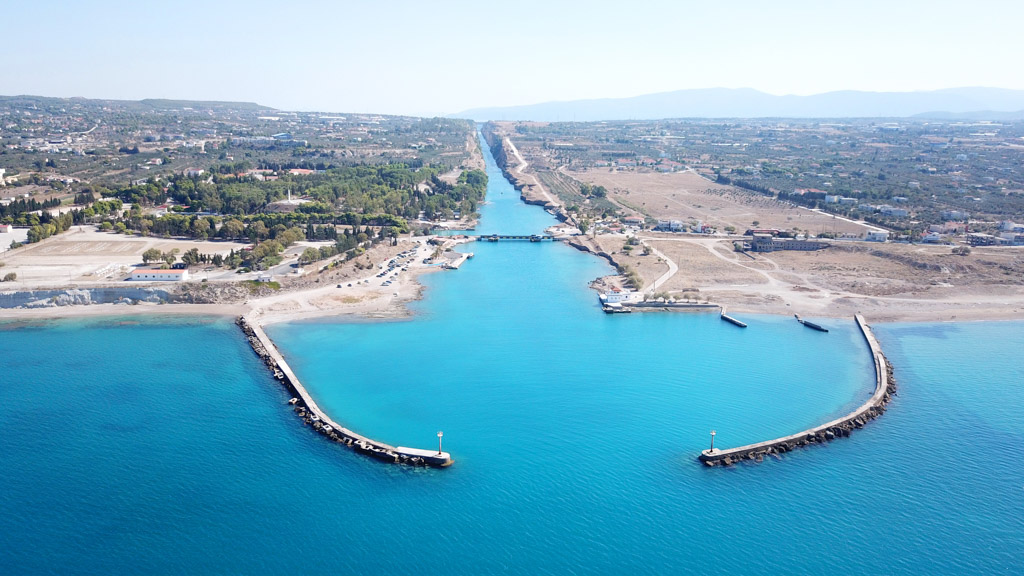
In 1881, the Société Internationale du Canal Maritime de Corinthe was formed, and given a fresh concession. The company would construct the canal and be able to operate it for the next 99 years. Finally, the dream came into focus. On 23 April 1882, construction began. King George I of Greece attended the groundbreaking. Charilaos Trikoupis was the Prime Minister.
The Corinth Canal was one of several major events at the end of the 19th century that marked the flourishing of the new Greek State, along with the construction of the railroad and the inauguration of the modern Olympic Games.
A Stormy Passage
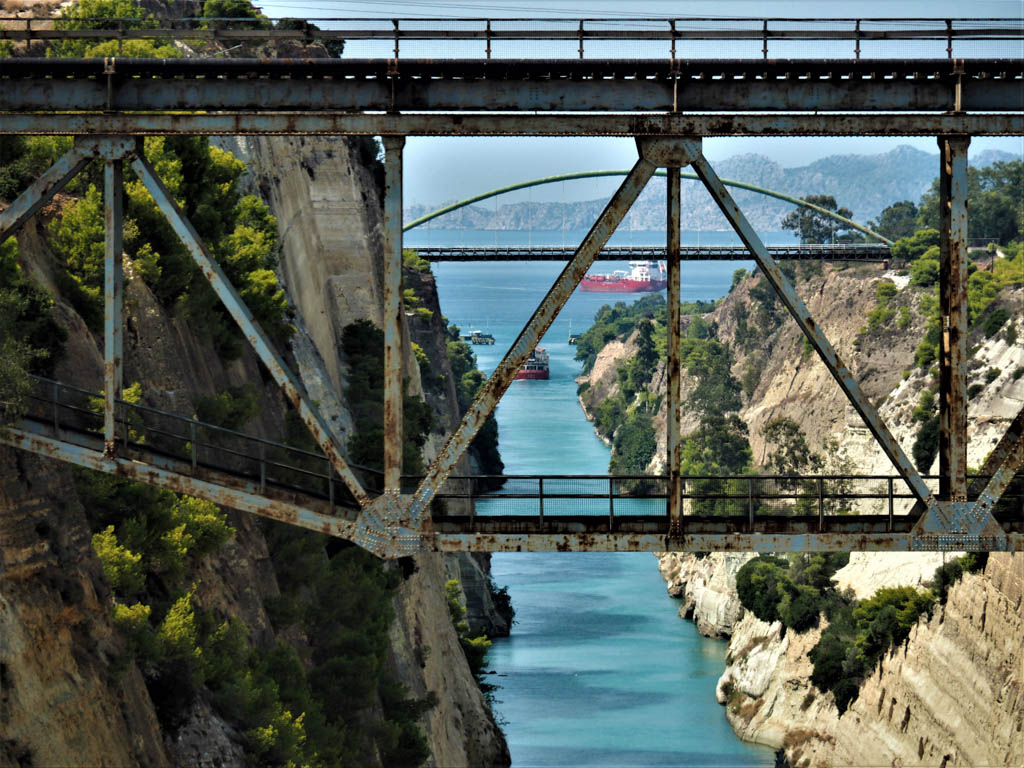
After all of the trials of its many attempts of construction over the centuries, when the Corinth Canal finally did open, there were still difficulties to manage. The tides of the two gulfs it connects are not in sync, and, considering the narrowness of the passage, this could make for some challenging tidal currents. The limestone walls in the seismic location also proved unstable. WWI caused a decline in traffic. And in WWII, the canal suffered damages, when the bridge crossing the canal was destroyed. Retreating German forces then did their best to leave the canal inoperable, by causing landslides and by filling the canal with locomotives and the wreckage of infrastructure.
The Corinth Canal in the Modern Era
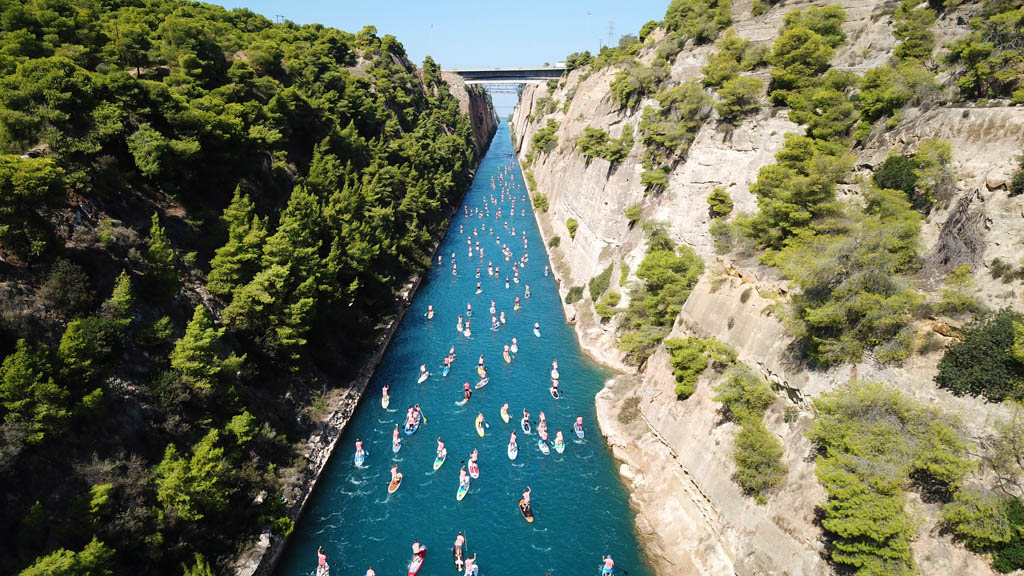
Post war, the US Army Corps of Engineers cleared the canal and by 1948 it was again fully operational. Given the width of the canal though, it is not used by modern commercial boats. Instead, one will see pleasure boats passing through the famous narrow canal with its high straight sides – a thrilling and beautiful passage to enjoy on a sailing trip of Greece.
Have you ever seen the Corinth Canal, or been on a sailing trip around the Greek Islands?

